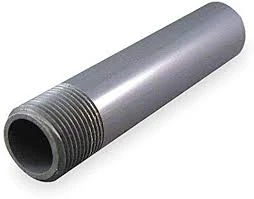-
Cangzhou Yulong Steel Co., Ltd.
-
Phone:
+86 13303177267 -
Email:
admin@ylsteelfittings.com
- English
- Arabic
- Italian
- Spanish
- Portuguese
- German
- kazakh
- Persian
- Greek
- French
- Russian
- Polish
- Thai
- Indonesian
- Vietnamese
- Zulu
- Korean
- Uzbek
- Hindi
- Serbian
- Malay
- Ukrainian
- Gujarati
- Haitian Creole
- hausa
- hawaiian
- Hebrew
- Miao
- Hungarian
- Icelandic
- igbo
- irish
- Japanese
- Javanese
- Kannada
- Khmer
- Rwandese
- Afrikaans
- Albanian
- Amharic
- Armenian
- Azerbaijani
- Basque
- Belarusian
- Bengali
- Bosnian
- Bulgarian
- Catalan
- Cebuano
- China
- China (Taiwan)
- Corsican
- Croatian
- Czech
- Danish
- Esperanto
- Estonian
- Finnish
- Frisian
- Galician
- Georgian
- Kurdish
- Kyrgyz
- Lao
- Latin
- Latvian
- Lithuanian
- Luxembourgish
- Macedonian
- Malgashi
- Malayalam
- Maltese
- Maori
- Marathi
- Mongolian
- Myanmar
- Nepali
- Norwegian
- Norwegian
- Occitan
- Pashto
- Dutch
- Punjabi
- Romanian
- Samoan
- Scottish Gaelic
- Sesotho
- Shona
- Sindhi
- Sinhala
- Slovak
- Slovenian
- Somali
- Sundanese
- Swahili
- Swedish
- Tagalog
- Tajik
- Tamil
- Tatar
- Telugu
- Turkish
- Turkmen
- Urdu
- Uighur
- Welsh
- Bantu
- Yiddish
- Yoruba

Nov . 27, 2024 06:34 Back to list
Understanding the Essentials of DIN Flange Standards for Engineers and Designers
Understanding the DIN Flange Standard
Flanges are crucial components in various piping systems, serving as connectors between two pipe ends, or between pipes and their equipment. One of the most recognized standards for flanges is the Deutsches Institut für Normung (DIN) Flange Standard, which is widely adopted not just in Germany but across the globe. This article aims to provide a comprehensive overview of the DIN flange standard, its specifications, and its advantages.
What is the DIN Flange Standard?
The DIN Flange Standard is a set of guidelines developed by the German Institute for Standardization (DIN). It provides detailed specifications regarding the dimensions, material properties, and manufacturing processes for various types of flanges. The most common standards include DIN 2573, DIN 2576, and DIN 2627, among others, encompassing different pressure ratings, sizes, and applications.
Key Specifications
The DIN flange standard primarily focuses on several key aspects
1. Dimensions The standard specifies the exact measurements for the diameter, thickness, and bolt hole dimensions, ensuring that flanges can be reliably assembled with pipes and fittings. This consistency reduces the risk of leaks and other operational issues in piping systems.
2. Pressure Ratings Flanges are classified by their pressure ratings, which indicate the maximum pressure they can withstand. The DIN standard categorizes flanges based on their corresponding pressure classes, which ensures that the right type of flange is selected for specific applications.
3. Materials The standard also outlines permissible materials for flange manufacturing, typically including but not limited to carbon steel, stainless steel, and alloy materials. This range of materials allows for flanges to be used in various environments, including high-temperature and corrosive conditions.
din flange standard

4. Surface Finish The DIN standards specify surface finish requirements to ensure proper sealing capabilities when flanges are joined. This is particularly important for high-pressure and high-temperature applications.
Advantages of DIN Flanges
1. Interchangeability One of the most significant advantages of the DIN flange standard is interoperability. Due to standardized dimensions and specifications, DIN flanges can easily be interchanged with other components that adhere to the same standards, minimizing installation complications and downtime.
2. Reliability The rigorous testing and specifications set forth by the DIN standard lead to highly reliable flanges. This reliability translates to safer and more efficient piping systems, which is crucial in industrial applications.
3. Global Acceptance While originally developed in Germany, the DIN flanges are recognized and utilized globally. This widespread acceptance facilitates international trade and simplifies installation processes for companies operating in multiple countries.
4. Variety of Options The different types and sizes of DIN flanges available allow engineers and operators to select the most appropriate flange type tailored to their specific needs. Whether it’s a weld neck flange, slip-on flange, or blind flange, the variety ensures that solutions can be customized.
Conclusion
The DIN Flange Standard is an integral part of modern piping system design and implementation. By providing comprehensive specifications regarding dimensions, materials, pressure ratings, and more, it assures engineers and manufacturers of consistency, reliability, and safety in their products. As industries continue to evolve and new applications emerge, the importance of adhering to established standards like those set by DIN cannot be overstated. Whether for plumbing, chemical processing, or oil and gas applications, understanding and utilizing the DIN flange standard is essential for anyone involved in the design and construction of piping systems.
Latest news
-
ANSI 150P SS304 SO FLANGE
NewsFeb.14,2025
-
ASTM A333GR6 STEEL PIPE
NewsJan.20,2025
-
ANSI B16.5 WELDING NECK FLANGE
NewsJan.15,2026
-
ANSI B16.5 SLIP-ON FLANGE
NewsApr.19,2024
-
SABS 1123 FLANGE
NewsJan.15,2025
-
DIN86044 PLATE FLANGE
NewsApr.19,2024
-
DIN2527 BLIND FLANGE
NewsApr.12,2024
-
JIS B2311 Butt-Welding Fittings LR/SR 45°/90° /180°Seamless/Weld
NewsApr.23,2024











